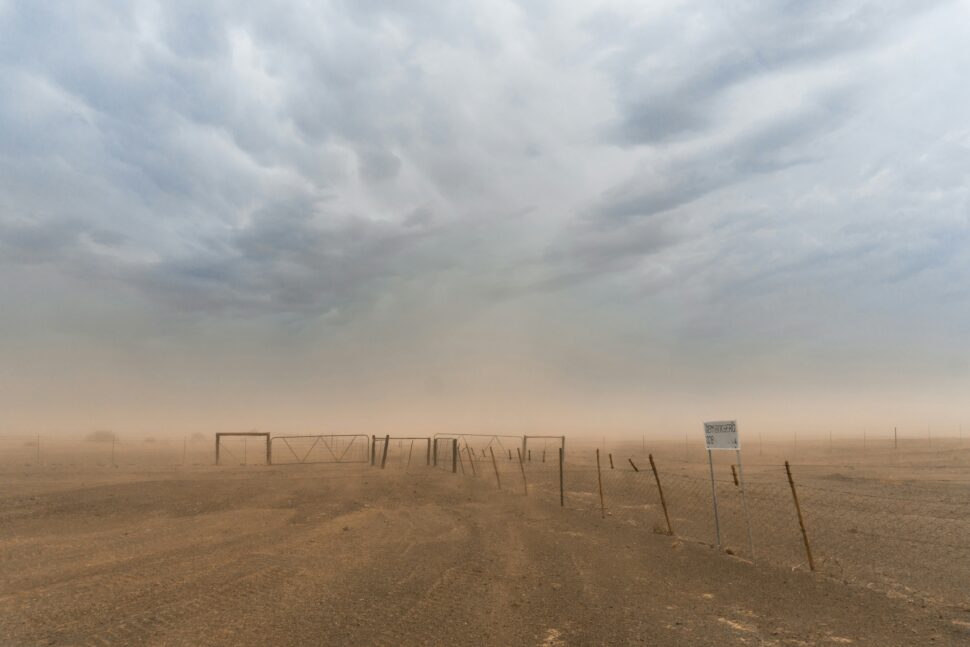Imagine driving down a desert highway on a bright summer afternoon when suddenly, the horizon disappears behind a towering wall of dust. Then, within minutes, the sky darkens, visibility drops to zero, and breathing becomes difficult. This phenomenon is not a scene from a movie. In real life, it’s known as a haboob – one of nature’s most dramatic displays in desert climates.
For travelers, especially those exploring regions like Arizona, Sudan or even Australia, knowing about this phenomenon is incredibly important. Being knowledgeable can distinguish between an unforgettable adventure and a dangerous situation. These types of storms disrupt air and road travel and can also trigger accidents, health issues and power outages. By learning how haboobs form, where they strike and what makes them different from regular dust storms, travelers can be better prepared.
Why Do They Call It Haboob?

The name “haboob” has some ancient linguistic roots, which reflect the storm’s powerful motion . The word is derived from the Arabic word “habba,” which translates as “to blow,” per the National Oceanic and Atmospheric Administration. Haboob was originally used by people in Sudan to describe fierce seasonal dust storms that happened around the Nile Valley.
Then, over time, the term was used in the vocabulary of meteorologists and scientists who studied desert weather patterns. This was particularly because the Arabic term captured the storm’s violent, fast-moving nature in a way that just saying “dust storm” does not. Today, the word haboob describes the same type of thunderstorm-driven dust event. Whether it sweeps across the Sahara, whirls through the Arabian Peninsula or engulfs unsuspecting locales like Phoenix, Arizona, the word applies. The persistence of the name reminds people just how threatening these conditions can be.
What Is The Difference Between A Dust Storm And A Haboob?

For many travelers, the difference between a dust storm and a haboob is unclear. At first glance, the two may appear identical. They both have massive clouds of earth which rise into the air, then swallow landscapes and cities in their path. But the science behind them, which the National Severe Storms Laboratory describes, better reveals the important distinction between them.
A variety of weather systems can cause a dust storm. These can include strong winds ahead of a cold front, gusty outflow from a low-pressure system or even high-altitude jet streams pushing air downwards. Dust storms are any event where wind picks up and suspends fine particles into the atmosphere, reducing visibility.
A haboob, on the other hand, is a very specific type of dust storm. It occurs when the towering updrafts of a thunderstorm collapse and unleash powerful downdrafts. This sends cool, dense air rushing downwards. Then, when air slams into the desert floor, it spreads out rapidly in all directions. This lifts enormous amounts of dust and sand into the air. The result is a dramatic rolling wall of dust, which can be miles wide and thousands of feet high and ultimately engulf a city in minutes.
In short, all haboobs are dust storms, but not every dust storm has the thunderstorm-driven dynamics that make a haboob so sudden and imposing.
Where Is A Haboob Most Likely To Occur?
Haboobs are not confined to one corner of the world; they thrive wherever dry soil meets powerful thunderstorms, according to the National Weather Service. But as Geography Realm reports, there are many diverse areas where they can be found. Historically, they have been most common in North Africa. This is where Sudanese farmers and traders along the Nile endured these storms during seasonal transitions.
The Sahara Desert and the Arabian Peninsula also experience frequent haboobs. These arid landscapes provide plenty of loose dust for storms to lift into the sky. In Australia, especially in central regions, haboobs appear during the summer when cold fronts sweep across the desert interior. This creates towering clouds of dust that can blanket entire towns.
In the United States, haboobs are most common in the Sonoran Desert, which stretches across southern Arizona, southeastern California, New Mexico, Texas and northern Mexico. The Phoenix-Tucson corridor is particularly notorious for them since summer monsoon thunderstorms often collapse in the region. These generate massive outflows that whip dust into haboobs, so these storms frequently form along major highways. Haboobs are a meteorological curiosity and a serious hazard for travelers on the road.
When Was The Last Haboob In Phoenix?
Although Phoenix, Arizona, might not be the first place that comes to mind when thinking about haboobs, it is no stranger to them. As recently as Aug. 25, residents of the area watched as a colossal wall of dust approached the city. It transformed daylight into twilight in a matter of minutes. Winds topping 70 to 94 miles per hour ripped across the sky, hurled debris and uprooted trees, per Washington Post.
It even lifted so much dust that it grounded flights at the Phoenix Sky Harbor International Airport and knocked out power to thousands of homes. This haboob was so intense that one rooftop in Marana, a town northwest of Tucson, was completely torn off according to Fox Weather.
The haboob itself left a lasting impression on residents, understandably so. Many described it as one of the largest they had ever seen. One witness even commented to AP News reporters that they “couldn’t see a hand in front of their face.” So for visitors and locals of Arizona that day, the haboob was more than just a weather event. It was a striking reminder of the desert terrain’s raw power.
Frequently Asked Questions
What is another name for haboob?
While meteorologists typically use the correct terminology for this event, everyday people usually call them dust storms. But in the American Southwest, these terms are pretty much interchangeable, even if the storm qualifies as a haboob.
What is the longest Phoenix has gone without rain?
As AZ Central reports, the longest Phoenix has gone without rainfall was 160 days, in 1972.





